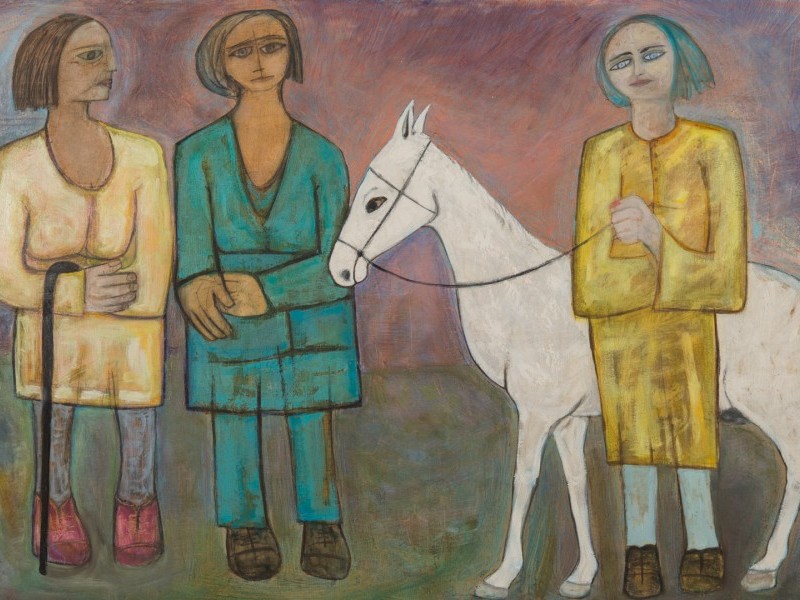

Biography
Kamal Youssef's work reflects a crucial historic intersection between Middle Eastern and Western cultures. As a teenager, he studied at King Farouk School in Abbasiya, Cairo, where he was first exposed to rigorous art training under the tutelage of master instructors such as Ratib Siddik and Hussein Yousef Amin, prominent artists known for their early engagement with the Egyptian surrealism and other avant-garde modernist movement in Egypt.
In 1939, Youssef joined the Art and Liberty group, one of Egypt’s most prominent art movements, which was founded by a number of journalists, poets and artists. In 1946, Youssef co-founded the Contemporary Art Group (Le Groupe de l’Art Contemporain), whose members played a crucial role in shaping the development of the modern art movement in Egypt.
Kamal travelled to Paris in 1954, where he met his late wife Maria Youssef. She played a central role in some of his works later on. After the 1953’s revolution Kamal decided to remain in France until he moved to the USA, where he worked as an engineer for over 20 years before retiring in the town of Dayton, Pennsylvania.
His work has been shown in numerous solo and group exhibitions, including Southern Alleghenies Museum of Art, Loretto, USA (2014); Bakersfield Museum of Art, USA (2008); Westmoreland Museum of Art, Greensburg, USA (1993); Pittsburgh Center for the Arts, USA (1962); Mediterranean Biennale, Alexandria, Egypt (1955); Museum of Modern Art, Cairo (1952); São Paulo Biennale (1952) and Venice Biennale (1950). Kamal also participated in the 1939 exhibition organized by the Art and Liberty Group, and in several of the Contemporary Art Group’s collective exhibitions between 1946 and 1954.
Born in 1923 in Cairo, Kamal currently lives and works in Pennsylvania, USA.
Related

Kamal Youssef: Egyptian Surrealism’s Time Capsule
Born in Egypt in 1923, Kamal Youssef continues to be productive for more than seventy years with a distinctive style of painting and sculpture.
